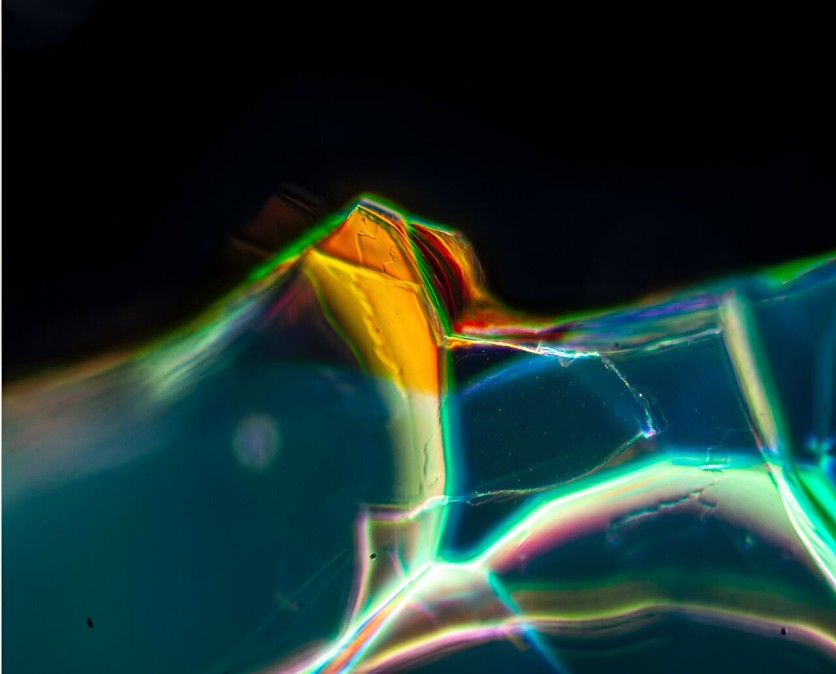Around 2,000 years ago in ancient Rome, glass vessels, once holding wine, water, or fragrances, tumbled and shattered on the streets. Over the centuries, these shards were buried under layers of earth.
As they resurface from archaeological sites and construction projects, they reveal a stunning transformation. Their surfaces exhibit an iridescent mosaic of blues, greens, and oranges, with some even boasting golden mirrors.

Photonic Crystals on Buried Ancient Roman Glass
These captivating glass remnants find new life as jewelry adornments like pendants and earrings, while more intact pieces find their way into museum displays.
But for Fiorenzo Omenetto and Giulia Guidetti, engineering professors at Tufts University Silklab with expertise in materials science, the allure lies in how the glass molecules have restructured over millennia, forming photonic crystals. These are ordered patterns of atoms that manipulate and reflect light in precise ways, Phys.org reported.
It must be noted that photonic crystals find diverse applications in modern technology, including waveguides, optical switches, and high-speed optical communication devices. Their ability to selectively filter light wavelengths makes them crucial components in filters, lasers, mirrors, and stealth devices.
Omenetto, Guidetti, and their collaborators delve into the intricate atomic and mineral structures that evolved from the glass's original silicate and mineral composition. Factors like environmental pH levels and groundwater fluctuations influenced these transformations.
The project's inception was spurred by a visit to the Italian Institute of Technology's Center for Cultural Heritage Technology. A fragment of Roman glass near Aquileia, Italy, caught their eye. Arianna Traviglia, the Center's director, dubbed it the "wow glass." Hence, they decided to investigate further.
What they uncovered was a natural nanofabrication of photonic crystals, a remarkable process where glass, after two millennia in the mud, transformed into a textbook example of a nanophotonic component.
Chemical Analysis
According to the researchers, chemical analysis dated the glass to the period between the 1st century BCE and the 1st century CE, originating from the sands of Egypt, which hints at an ancient global trade.
While the majority retained its original deep green shade, the surface featured a patina about a millimeter thick, exhibiting an almost flawless golden sheen.
Using a sophisticated scanning electron microscope, Omenetto and Guidetti not only revealed the material's composition but also gained insights into its elemental makeup.
Within the patina, they identified a hierarchical structure resembling reflectors called Bragg stacks. These stacks selectively reflected specific light wavelengths, resulting in the striking golden mirror effect.
The evolution of this structure likely entailed a process of corrosion and reconstruction, influenced by elements like surrounding clay and precipitation. This intricate arrangement of layers of crystalline material emerged as a consequence.
In a curious parallel, the molecular process mirrors the history of Rome itself, a city built on layers of time, upheavals, and reconstructions. This ancient glass reflects not just the past but the resilience and adaptability of a city that has stood the test of time.
The team's findings were published in the Proceedings of the National Academy of Sciences.

ⓒ 2025 TECHTIMES.com All rights reserved. Do not reproduce without permission.




